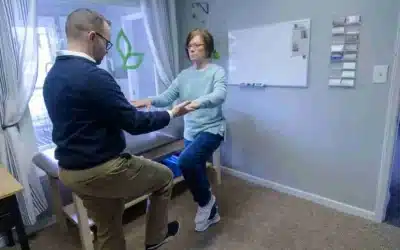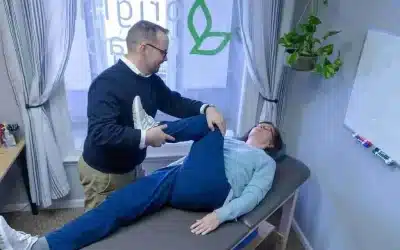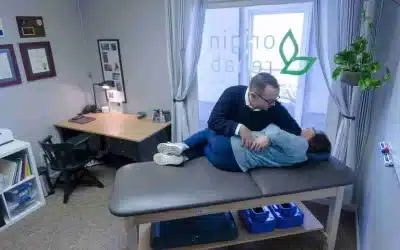Falls in older adults are a problem. A big problem. According to the latest estimates, 1 in 4 Americans over the age of 65 will fall this year because of their age alone. The likelihood increases to...
Year: 2022
Preventing Back Injury in Caregivers: How to Help Getting Out of a Chair
You are a caregiver, a giver of care. You are a member of a community who intentionally sets their needs aside to address the needs of others. This is a noble calling. However, I’m going to keep the...
Preventing Falls in the Elderly and 65+ Adult Population
With recent celebrity deaths linked to falling, we wanted to highlight the risks and dangers of falling in senior adults. Even more important, we wanted to help you move beyond being afraid of...
The Ultimate Guide to Dry Needling Therapy
We get a lot of questions about dry needling from patients who have heard about the procedure from a friend or family member. Other times, we recommend dry needling to patients who have not...
The Hidden Cause of Your Constant Neck & Upper Back Pain
Neck pain and upper back pain may be two of the most common ailments people experience. From struggling to move your neck, to worrying about the position you sit in on your favorite sofa, pain in...
Why Back Pain Isn’t “NORMAL” Even if You’re Getting Older
Back pain: very few people go through life without feeling its debilitating effects. From dull aches to sharp, stabbing sensations, back pain can afflict many of us in various ways. For a some...
The Basics of Macros – A Recap of Our Workshop
It’s RECAP day…if you missed the Nutrition Workshop with Guest Speaker Heather Wilson (owner of AGT Wellness) last week or knew you wouldn’t be able to join live, we are bringing you the inside...
Nutrition that Makes a Difference
At Origin Rehab we’ve been helping people improve their health for years and will continue to bring you speakers who are experts in their field who can help you improve your health and ability to...
Tips for Avoiding Back Pain While Driving This Season
There’s something about driving, isn’t there? The long roads, the beautiful landscapes, great music on the stereo, and back pain. Wait, what? Back pain? Yes, that’s right. While we all love taking...
3 Causes of Hip-Pain Unrelated to Injuries
We’ve all been there… our hands clutching at our thighs in the hope of relieving hip-stress as we get up or sit down; a grimace on our faces as we try to grapple with what we think are signs of...
Request An Appointment
Please fill out this form and
we will contact you about scheduling.






